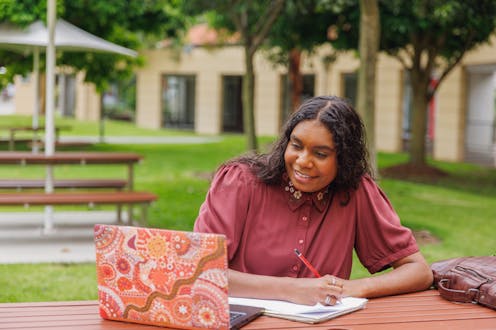we are the voice – why we need more Indigenous editors
- Written by Sandra Phillips, Associate Dean (Indigenous Engagement), Faculty of Humanities and Social Sciences, The University of Queensland

Eddie Koiki Mabo and others made the High Court of Australia recognise in 1992 that terra nullius – nobody’s land – was a fiction. It is taking us longer to kill off its lesser-known cousin, vox nullius. Vox can mean sound, word or voice; ideas of us – us being Aboriginal and/or Torres Strait Islander peoples – having no voice are part of an enduring colonial imaginary.
Bwgcolman[1] midwife and nurse researcher, Dr Lynore K. Geia has referred to us[2] being “bound in a place of vox nullius” – the phraseology is significant. It says as Indigenous peoples we have our voices, but the place of our contemporary existence – Australia – is not hearing or listening.
We are now on course toward a referendum on constitutional recognition. The Australian electorate might respond to the Uluru Statement from the Heart[3] by delivering a green light for a Voice to Parliament[4]. That Voice should go some way to eliminating the vacuum that refuses our voices. And there are many other ways our voices can be heard.
Read more: Friday essay: 30 years after Mabo, what do Australia's battler stories – and their evasions – say about who we are?[5]
Publishing Indigenous voices
Our voices have always been fundamentally connected to our territories and made visible on Country – in sand, on bodies, message sticks, trees and walls, through waters, and up in smoke. Our voices, as channelled through the adopted technology of alphabetic writing, can be seen in our history of protest writing, our scripts for radio, stage and screen, and in our contemporary literature.
Publishing Indigenous voices in books is complex – culturally and interculturally. So much nuance can be missed or misread. For example, many Blak people see red over initial-letter lower-casing; lower-casing that is frequently used in historical and contemporary colonial lingua franca.
Destiny Deacon, 2022 First Nations Red Ochre Award[6] recipient, coined Blak[7] in a 1991 photograph, “Blak lik mi”, as clapback to all the racists who use black as an insult. Deacon is reported as saying:
Blak – meaning specifically Australian Indigenous people – started to get used more widely and now it’s everywhere, right across the board. Art, music, theatre, dance. I’m glad the Indigenous community is using it and that I get acknowledged for it.
Taking the “c” out of Blak removes the racist from our view, but it also displaces the colour black as exclusive marker of who we are. Indigenous peoples across this continent come in all different skin colours. It is not hard to see how an editor ignorant of our cultural history and contemporary politics would mark up a manuscript to “correct” Blak to black and drive a wedge in the editorial relationship, which only works when trust lives there.
Aboriginal trans/non-binary queer Professor of Indigenous Studies, Sandy O’Sullivan[8], generously reminds us (in the academy and across social media) that “Aboriginal” and “Indigenous”, as they pertain to us, are proper nouns and as such should be initial-letter capitalised. Sandy and their colleagues have also created an excellent guide[9] to writing and speaking about Indigenous people in Australia. Every editor should use it like a compass as they navigate this terrain.
Against ‘gubberising’
There have been excellent recent public contributions to maturing Australian publishing. Bridget Caldwell-Bright frames her advocacy[10] for more Indigenous publishing professionals within conversations about diversity. She argues employment is “the only concrete way to ensure that Indigenous expression can exist without having to rely on the cross-cultural editorial relationship”.
Caldwell-Bright has a strong point: fewer than 1% of Australian publishing professionals identified as First Nations in the 2022 Australian Publishing Industry Workforce Survey[11] on Diversity and Inclusion. As a former publisher’s editor who trained and worked at Magabala Books[12] and University of Queensland Press[13] in the 1990s – and who later managed Aboriginal Studies Press[14] in the 2000s – I too advocate for more publishing career opportunities for us Mobs.
Read more: White, female, and high rates of mental illness: new diversity research offers a snapshot of the publishing industry[15]
But the publishing industry cannot rely solely on its Indigenous workforce to ensure it catches up on effective practices in relation to Indigenous writers and writing. The industry’s culture needs to change to effect sustainable, meaningful and continuous improvement.
Read more https://theconversation.com/friday-essay-we-are-the-voice-why-we-need-more-indigenous-editors-182222

















